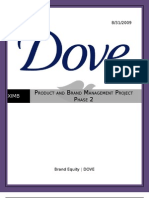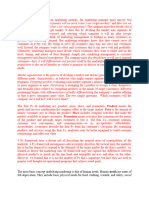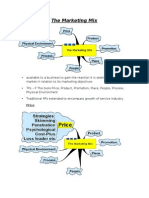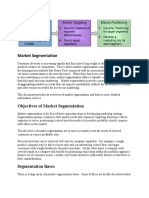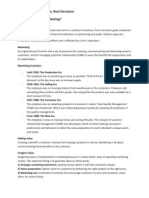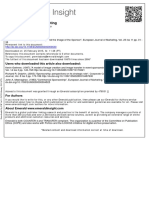07-28-2010 - 1 - Macroecon
07-28-2010 - 1 - Macroecon
Uploaded by
Ahmed HaniahCopyright:
Available Formats
07-28-2010 - 1 - Macroecon
07-28-2010 - 1 - Macroecon
Uploaded by
Ahmed HaniahOriginal Title
Copyright
Available Formats
Share this document
Did you find this document useful?
Is this content inappropriate?
Copyright:
Available Formats
07-28-2010 - 1 - Macroecon
07-28-2010 - 1 - Macroecon
Uploaded by
Ahmed HaniahCopyright:
Available Formats
The completed table is as follows: 303-942-8600. 53056. aVELON http://homeworkaholic.com/system/files/tablebzsnrh8dn1x.png http://homeworkaholic.com/system/files/table2bp639sl3wed9.
png To find each component as a percentage of GDP, divide that component by total GD P and multiply by 100. We can use the table to answer the rest of exercise 1. Following the direct ions, we find that consumption has the least change between its maximal and minimal percentage of t otal GDP and is therefore the least volatile. We find the growth rate of the percentage by calcu lating the difference in percentage of GDP from year to year: Consumption has also GDP every year. This normal for a growing more and invest less as a percentage grown the fastest since it has increased its percentage of is economy since as people become wealthier, they can consume of total wealth.
2. Hyperinflation has a devastating effect on economies for two reasons. Firstly , one function of money is a store of value. Hyperinflation destroys this stored value making people less w ell off. If people lose all stored value, they are unable to consume or invest nearly as much because they h ave much less wealth than before. Secondly, prices carry information. Worrying about the volatility o f prices increases the cost of economic transactions since the current value of currency must be taken into account. Great effort is required to keep up with prices that change hourly. 3. If economies are on a fixed gold standard and new discoveries of gold do not keep up with GDP, then the same amount of money stays is in the economy but there are many more goods i n the economy. the same amount of money chasing more goods leads to deflation since each unit of mo ney becomes more valuable in terms of its buying power. This is among the disadvantages of the go ld standard. 1- Mortgage. 930 2- Electricity. 200 3- Car Payment. 130 4- Cellphone. 60 5- Internet & cable. 100 7- Barkely CC. 200 8- Dish network 80. x: 317- 4686300 http://www.termpaperwarehouse.com/essay-on/Check-Point-2/59414 In: Business and Management Check Point 2 | (TCOs C, H) Describe customer perceived value, total customer benefit, and tot
al customer cost. How do the total customer benefit and the total customer cost affect the consumer s perception? Explain. | | | | | *Customer perceived value is the difference between the prospective cu stomer s evaluation of all the benefits and all the costs of an offering and the p erceived alternatives. *Total customer benefit is the perceived monetary value o f the bundle of economic, functional, and psychological benefits customers expec t from a given market offering because of the products, services, personnel, and image involved. *Total customer cost is the perceived bundle of costs customers expect to incur in evaluating, obtaining, using, and disposing of the given mar ket offering, including monetary, time, energy, and psychological costs. When th e customer makes his buying decision, he evaluates the benefits he perceives fro m a particular product and compares them with the costs. The value a customer pe rceives when buying and using a product or service go beyond usability. There is a set of emotional values as well, such as social status, exclusivity, friendli ness and responsiveness or the degree to which personal expectations and prefere nces are met. Similarly, the costs perceived by the customer, normally comprise more than the actual price. They also include costs of usage, the lost opportuni ty to use an other offering, potential switching costs etc. Hence, the customer establishes an equation between perceived benefits and perceived costs of one pr oduct and compares this to similar equations of other products. | | | | | | | | (TCOs C, H) What are some of the ways that a business can attract and retain cus tomers? | | | | | Some of the ways that a business can use to attract and retain custome rs are: They can develop ads and place them in media that will reach new prospec ts; send direct mail and make phone calls to possible new prospects; send their salespeople to participate in trade shows where they might find new leads; purch ases names from list brokers... | | | | | | | | (TCOs C, H) What are the five stages in the buying decision process? Briefly des cribe each. | |
| : | | The five stages in the buying decision process are : 1- Problem reco gnition: The buying process starts when the buyer recognizes a problem or need t riggered by internal stimulus (hunger, thirst...) or external stimulus (may admi re a neighbor s new car or see a television ad for a Hawaiian vacation). 2- Inform ation search: The milder search state is called heightened attention. At this le vel a person simply becomes more receptive to information about a product. At th e next level, the person may enter an active information search: looking for rea ding material, phoning friends, going online, and visiting stores to learn about the product. 3- Evaluation of Alternatives: the consumer forms preferences amon g the brands in the choice set. The consumer may also form an intention to buy t he most preferred brand. its about the way the consumer processes competitive br and information and make a final value judgment 4- Purchase Decision: In executi ng a purchase intention, the consumer may make up to five subdecisions: brand (b rand A), dealer (dealer 2), quantity (one computer), timing (weekend), and payme nt method (credit card). 5- Post-purchase Behavior: After the purchase, the cons umer might experience dissonance that stems from noticing certain disquieting fe atures or hearing favorable things about other brands and will be alert to infor mation that supports his or her decision. Marketing communications should supply beliefs and evaluations that reinforce the consumer s choice and help him feel go od about the brand. | | | | | | | | (TCOs C, H) What is a niche market? What does an attractive niche market look li ke? | | | | | A niche market is a more narrowly defined customer group seeking a dis tinctive mix of benefits. Marketers usually identify niches by dividing a segmen t into subsegments. A niche is fairly small but has size, profit, and growth pot ential and is unlikely to attract many other competitors; and the nicher gains c ertain economies through specialization. The traffic volumes or demand, the numb er of competitors and product quality are the crucial, key factors when consider ing profitable niche markets. | | | | | | | | (TCOs C, H) What is a market segment? What are some of the factors that may be u sed to narrow the market down into segments? | | | | | Market Segment: A group of people that share one or more characteristi
cs. Each market segment is unique. To meet the most basic criteria of a market s egment, three characteristics must be present: * Homogeneity (common needs withi n segment) * Distinction (unique from other groups) * Reaction (similar response to market) Some of the factors that may be used to narrow the market down into segments are: -Demographic Segmentation: This segment involves categorization of customers based on factors such as age, income, family size, gender, education, nationality, race, etc. -Geographical Segmentation: segmentation based on the r egion is important while dealing with specific products and the climatic conditi ons can determine one's target area. -Behavioral Segmentation: This form of segm entation clubs factors like brand loyalty and value of quality. For example, sev eral IT companies market their products specifically to customers loyal to their products. Then again, certain companies target their high scale products to peo ple who cherish, value and are ready to shell out extra cash for valuable pieces . -Psychographic Segmentation: This type of categorization involves clubbing of people's interests, life styles and personalities. | | | | | | | | (TCOs C, H) How would you describe a brand? What roles do brands play in the mar ket? | | | | | Any brand is a set of perceptions and images that represent a company, product or service. While many people refer to a brand as a logo, tag line or a udio jingle, a brand is actually much larger. A brand is the essence or promise of what will be delivered or experienced. Importantly, brands enable a buyer to easily identify the offerings of a particular company. Brands are generally deve loped over time through: -Advertisements containing consistent messaging -Recomm endations from friends, family members or colleagues -Interactions with a compan y and its representatives -Real-life experiences using a product or service (gen erally considered the most important element of establishing a brand) The brand image is the key to developing the most powerful and suitable pictures in the cons umer s minds. And this is exactly why brands are so important for marketing a prod uct. It is of vast importance to realize that consumers don t just buy a product, but also the image associations of the product. In our world, we define ourselve s by our possessions, or better: we constantly try to inherit the image of a bra nd for ourselves. | | | | | | | | (TCOs C, H) What is brand equity? Provide an example. | |
| | | Brand equity is the value premium that a company realizes from a produ ct with a recognizable name as compared to its generic equivalent. Companies can create brand equity for their products by making them memorable, easily recogni zable and superior in quality and reliability. Mass marketing campaigns can also help to create brand equity. Brand equity is the positive differential effect t hat knowing the brand name has on customer response to the product or service. ( Armstrong & Kotler, 211) The additional money that consumers are willing to spen d to buy Coca Cola rather than the store brand of soda is an example of brand eq uity. another example, if consumers are willing to pay $100 more for a branded t elevision over the same unbranded television, this premium provides important in formation about the value of the brand. | | | | | | | | (TCOs C, H) When you analyze your competitors, what are the areas of greatest co ncern? Using the soft drink industry, provide examples of the type of informatio n required. | | | | | According to our textbook, once a company identifies its primary compe titors, it must ascertain their strategies, objectives, strengths, and weaknesse s -Competitor's strategy: The two main sources of information about a competitor 's strategy is what the competitor says and what it does (Pepsico can obtain inf ormation about coca's strategy from the 10-K form for example, or from its manag ement announcements...) . -Competitor's objectives : Knowledge of a competitor's objectives facilitates a better prediction of the competitor's reaction to diff erent competitive moves. for example PepsiCo knows that Coca-Cola's main objecti ves are to supply everyone their favorite drink and to satisfy the consumer need s and wants. - Strength: Coca-Cola has been a complex part of American culture f or over a century. The Coca-Cola image is displayed on T-shirts, hats, and colle ctible memorabilia. This extremely recognizable branding is one of Coca-Cola's g reatest strengths. -Weaknesses: Coca-Cola on the other side has effects on the t eeth which is an issue for health care. It also has got sugar by which continuou s drinking of Coca-Cola may cause health problems. Being addicted to Coca-Cola a lso is a health problem, because drinking of Coca-Cola daily has an effect on yo ur body after few years. | | | | | | | | | |
You might also like
- Brand Equity DoveDocument19 pagesBrand Equity DoveSujit50% (8)
- Strategic Brand Management Building Measuring and Managing Brand Equity 4th Edition Kevin Solutions ManualDocument11 pagesStrategic Brand Management Building Measuring and Managing Brand Equity 4th Edition Kevin Solutions ManualKeithRomeros100% (1)
- Marketing AssignmentDocument13 pagesMarketing AssignmentHawe MesfinNo ratings yet
- Mid-Term Exam AnswersDocument4 pagesMid-Term Exam AnswersNurshafikha Jamaludin50% (2)
- Marketing Management - Articles SummaryDocument37 pagesMarketing Management - Articles SummaryLatolidNo ratings yet
- The Walt Disney Company - CASE ANALYSIS PDFDocument44 pagesThe Walt Disney Company - CASE ANALYSIS PDFpragadeeshwaran100% (2)
- Agriculture Produce Farm Marketing PlanDocument20 pagesAgriculture Produce Farm Marketing PlanPalo Alto Software100% (6)
- Brand Charter For Hypothetical BrandDocument2 pagesBrand Charter For Hypothetical BrandShaluNo ratings yet
- Bill Merrilees Dale Miller Principles of Corporate RebrandingDocument16 pagesBill Merrilees Dale Miller Principles of Corporate RebrandingFoo Yean NeeNo ratings yet
- Impact of Social Media On Consumer BehaviourDocument15 pagesImpact of Social Media On Consumer BehaviourYash Paliwal100% (5)
- Nokia Brand Equity AnalysisDocument32 pagesNokia Brand Equity AnalysisSafia Afreen100% (1)
- 522 Week 3 CheckpointDocument3 pages522 Week 3 CheckpointGil SuarezNo ratings yet
- Elective Module 2Document10 pagesElective Module 2Risavina Dorothy CondorNo ratings yet
- Segmentation Targeting Positioning (STP)Document20 pagesSegmentation Targeting Positioning (STP)doreen11No ratings yet
- Marketing AssignmentDocument8 pagesMarketing AssignmentMuhammad Oumair KhanNo ratings yet
- DDocument6 pagesDTesfaye Belaye50% (2)
- Basic Marketing (Study About Segmentation, Consumers and Environment) .Document8 pagesBasic Marketing (Study About Segmentation, Consumers and Environment) .Jagriti SrivastavaNo ratings yet
- Marketing 06Document6 pagesMarketing 06iadeemsNo ratings yet
- Consumer Behaviour Assignment-2: Submitted To Prof. Anupam NarulaDocument15 pagesConsumer Behaviour Assignment-2: Submitted To Prof. Anupam NarulaAmansapraSapraNo ratings yet
- REVIEWER ME (Finals)Document17 pagesREVIEWER ME (Finals)cynthia karylle natividadNo ratings yet
- A250423973 - 23954 - 19 - 2019 - Defining Marketing For The New RealitiesDocument5 pagesA250423973 - 23954 - 19 - 2019 - Defining Marketing For The New RealitiesShashank Cooled RanaNo ratings yet
- ELEC1 WEEK4 Lesson3Document33 pagesELEC1 WEEK4 Lesson3yra combalicerNo ratings yet
- 1Document22 pages1SaviNo ratings yet
- New FileDocument54 pagesNew FileSubhash BajajNo ratings yet
- Introduction To Marketing: Helina Alemayehu Submitted To:-Yibeltal A - Assistant ProfessorDocument9 pagesIntroduction To Marketing: Helina Alemayehu Submitted To:-Yibeltal A - Assistant ProfessorKaleab AlemayehuNo ratings yet
- Marketing Management 2&3Document19 pagesMarketing Management 2&3Nikhil Bhatia100% (1)
- Introduction of Marketing MixDocument5 pagesIntroduction of Marketing MixManoranjan BisoyiNo ratings yet
- Marketing Mix: January 2021Document6 pagesMarketing Mix: January 2021asffgyyhb Bhhhj vNo ratings yet
- Marketing and Customer Value - Terney KathDocument3 pagesMarketing and Customer Value - Terney KathDanielle Edenor Roque PaduraNo ratings yet
- Key Concepts Discussed in The Preface of The Textbook: Marketing Summaries: Chapters 1 - 3Document9 pagesKey Concepts Discussed in The Preface of The Textbook: Marketing Summaries: Chapters 1 - 3Sandeep WadhwanaNo ratings yet
- Service MarketingDocument33 pagesService MarketingAparna SamuelNo ratings yet
- MarketingDocument34 pagesMarketing61Shifa MahatNo ratings yet
- Strategic Marketing AnalysisDocument21 pagesStrategic Marketing Analysismaraikanfederation2324No ratings yet
- MKT482Document24 pagesMKT482KELVIN KWESI HOWARDNo ratings yet
- MGT 603: Topic 1 - Consumer Behavior: Its Origins and Strategic ApplicationsDocument31 pagesMGT 603: Topic 1 - Consumer Behavior: Its Origins and Strategic ApplicationsMuthusamy SenthilkumaarNo ratings yet
- BSENT 3-3 BPP Group3-Mariano-Jan Francis - Assignment #4Document4 pagesBSENT 3-3 BPP Group3-Mariano-Jan Francis - Assignment #4jan francis marianoNo ratings yet
- Ut Model Solution (MM) 2022-23Document9 pagesUt Model Solution (MM) 2022-23arunupadhyay0012No ratings yet
- Marketing MixDocument29 pagesMarketing Mixabhishek aggarwalNo ratings yet
- Week 1 Group WorkDocument3 pagesWeek 1 Group Workedward0523leeNo ratings yet
- Marketing Management FINAL ASSIGMENTDocument9 pagesMarketing Management FINAL ASSIGMENTBirhan AlemuNo ratings yet
- Marketing ManagementDocument10 pagesMarketing ManagementAkshat JainNo ratings yet
- Programme Name: BCS (HONS) Course Code: MKTG 1010 Course Name: Basic MarketingDocument7 pagesProgramme Name: BCS (HONS) Course Code: MKTG 1010 Course Name: Basic MarketingAnil khatriNo ratings yet
- II UNIT MARKETING MANAGEMENTDocument16 pagesII UNIT MARKETING MANAGEMENTRAMESH KUMARNo ratings yet
- Marketing Managment 201 (2021 Credit Pattern)Document18 pagesMarketing Managment 201 (2021 Credit Pattern)chaitalinagarale358No ratings yet
- Lesson 07-08 - Entrepreneurship - 2 PDFDocument20 pagesLesson 07-08 - Entrepreneurship - 2 PDFurhen0% (1)
- mediaplanning final notesDocument60 pagesmediaplanning final notesClinic AssistanceNo ratings yet
- MMDocument8 pagesMMSakshi AgarwalNo ratings yet
- Answers - QuizDocument4 pagesAnswers - QuizadilkhanNo ratings yet
- Review Essay Market AdaptationDocument13 pagesReview Essay Market Adaptationtalk2shrutiNo ratings yet
- The Marketing Mix: PriceDocument11 pagesThe Marketing Mix: Priceennya74No ratings yet
- Bajaj TheoryDocument5 pagesBajaj TheoryNikhil IngaleNo ratings yet
- Page - 1Document17 pagesPage - 1Taohid KhanNo ratings yet
- Assignment 2 (Marketing)Document18 pagesAssignment 2 (Marketing)MikealayNo ratings yet
- Unit 3-2Document5 pagesUnit 3-2Brian MulengaNo ratings yet
- Strat 4Document36 pagesStrat 4Reichelle Anne BereberNo ratings yet
- Assignment: Marketing ManagementDocument14 pagesAssignment: Marketing ManagementOjal SahuNo ratings yet
- Marketing Management AssignmentDocument12 pagesMarketing Management AssignmentVineet Ganvi100% (1)
- Pricing Strategy Reviewer Part 2Document15 pagesPricing Strategy Reviewer Part 2Paula Marie De GuzmanNo ratings yet
- Ch-1 PPT Principles of MKTDocument22 pagesCh-1 PPT Principles of MKTBamlak WenduNo ratings yet
- The Pragmatic Value of Metaphor in English Print and TV AdvertismentDocument22 pagesThe Pragmatic Value of Metaphor in English Print and TV AdvertismentAnna ManukyanNo ratings yet
- DM Individual ActivityDocument10 pagesDM Individual ActivityAnoop AnilNo ratings yet
- Product Decision 2Document22 pagesProduct Decision 2fsetncho721No ratings yet
- IM RevisionDocument11 pagesIM RevisionGain McLawNo ratings yet
- Oppgave PDFDocument6 pagesOppgave PDFChong Kai MingNo ratings yet
- Customer Relationship NotesDocument5 pagesCustomer Relationship NotesGina DiwagNo ratings yet
- Created By-Naina GuptaDocument32 pagesCreated By-Naina GuptaSweetnaina4everNo ratings yet
- Marketing: Real People, Real Decisions Chapter 1 What Is Marketing?Document14 pagesMarketing: Real People, Real Decisions Chapter 1 What Is Marketing?jelledusNo ratings yet
- Memo To Marketers - Quantitative Evidence For ChangeDocument13 pagesMemo To Marketers - Quantitative Evidence For ChangeR KNo ratings yet
- Retail CommunicationsDocument45 pagesRetail CommunicationsInder SinghNo ratings yet
- International Business Report US Kitchen Cabinet Market Entry Analysis ForDocument24 pagesInternational Business Report US Kitchen Cabinet Market Entry Analysis ForTanja Vedda100% (1)
- A Model of Tourism Destination Brand Equity The Case of Wine Tourism Destinations in SpainDocument13 pagesA Model of Tourism Destination Brand Equity The Case of Wine Tourism Destinations in SpainShadowfax_uNo ratings yet
- Sponsorship and The Image of The SponsorDocument12 pagesSponsorship and The Image of The SponsorYury ManoelNo ratings yet
- 11 2013 PDFDocument6 pages11 2013 PDF1816173 Saideep L AilNo ratings yet
- 1.1 Introduction To Study: Solapur University, SolapurDocument53 pages1.1 Introduction To Study: Solapur University, SolapurSampath SanguNo ratings yet
- Black and Decker Corporation (A)Document3 pagesBlack and Decker Corporation (A)Rohan Srivastava33% (3)
- New Products and Brand ExtensionsDocument27 pagesNew Products and Brand Extensionsinflibnet inflibnetNo ratings yet
- How To Measure Brand Equity Marketing Essay PDFDocument5 pagesHow To Measure Brand Equity Marketing Essay PDFSofiane SoNo ratings yet
- 10 1108 - Yc 05 2023 1749Document21 pages10 1108 - Yc 05 2023 1749Langit BaliageNo ratings yet
- Customer Based Brand Equity Identifying & Establishing Brand Positioning & ValuesDocument54 pagesCustomer Based Brand Equity Identifying & Establishing Brand Positioning & Valuesurandom101No ratings yet
- Week 1 ADocument29 pagesWeek 1 AHuNtEr GamerYTNo ratings yet
- Cardiff Student Union Dissertation BindingDocument5 pagesCardiff Student Union Dissertation BindingBuyCollegePaperSingapore100% (1)
- Marketing Assignment 3Document13 pagesMarketing Assignment 3hammad haris100% (1)
- Managing Corporate ReputationDocument34 pagesManaging Corporate Reputationseanj2011100% (1)
- Unit 1.3 Building Customer Satisfaction, Value, and RetentionDocument23 pagesUnit 1.3 Building Customer Satisfaction, Value, and RetentionAnu AnushaNo ratings yet
- SnappleDocument10 pagesSnappleShekhar BaidNo ratings yet
- Brands Resonance PyramidDocument4 pagesBrands Resonance PyramidAhsan HabibNo ratings yet
- How Do Corporate Social Responsibility (CSR) and Innovativeness IncreaseDocument11 pagesHow Do Corporate Social Responsibility (CSR) and Innovativeness IncreaseDaniela ÎnsurățăluNo ratings yet
- Unilever StrategyDocument33 pagesUnilever Strategyclarkmba98% (57)
- Journal of Strategic Marketing: To Cite This Article: Simon Knox & David Walker (2001) Measuring and Managing BrandDocument20 pagesJournal of Strategic Marketing: To Cite This Article: Simon Knox & David Walker (2001) Measuring and Managing Brand会沢 裕貴No ratings yet
